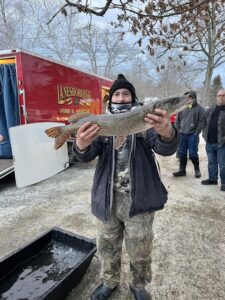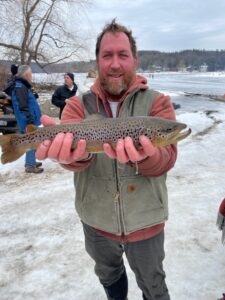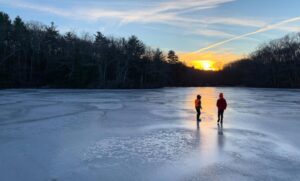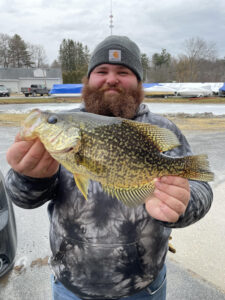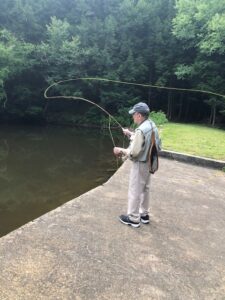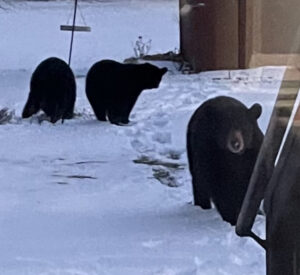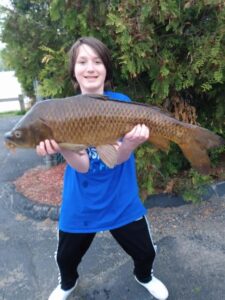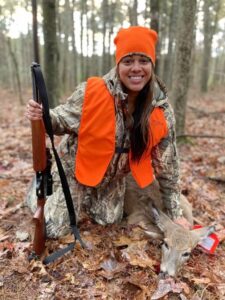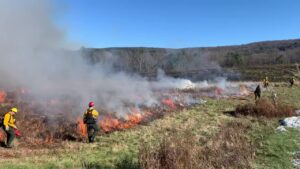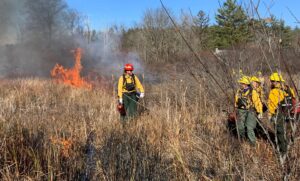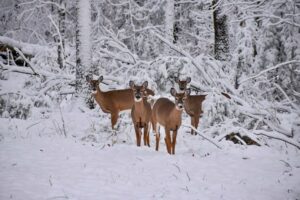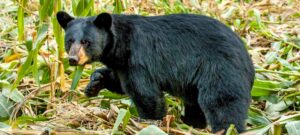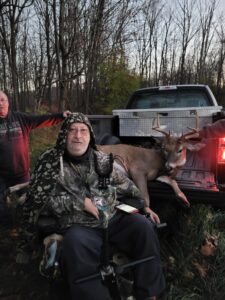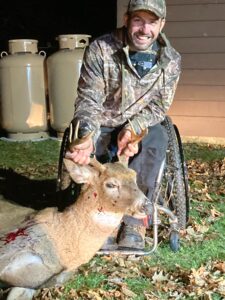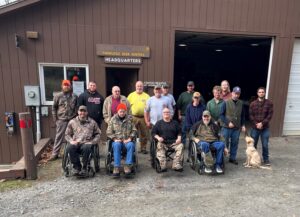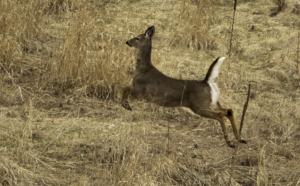In his February report to the Berkshire County League of Sportsmen, DFW Western District Supervisor Andrew Madden reported that the preliminary statewide deer harvest for 2022 was a record with 15,853 deer. “That harvest highlights growing deer abundance statewide and increased access to permits, with the previous 3-year average of 14,007.” he said.
The breakdown of the harvest by season is as follows:
- Youth Deer Hunt Day: 114
- Paraplegic Hunt Days: 7
- Archery Season: 6,543
- Shotgun Season: 5,823
- Primitive Firearms Season: 3,366
He noted that the harvest is well within the expected range allowed under strict regulations set by MassWildlife.
“The statewide deer population has been increasing for several decades,” said MassWildlife Deer and Moose Project Leader Martin Feehan. “Hunting is a critical tool for balancing deer populations with forest health while feeding tens of thousands of families across Massachusetts every year. It really is a win-win for both people and wildlife conservation.”
Deer densities vary widely from an ideal range of about 12–18 deer per square mile in most of central and western Massachusetts to more than 30–50 deer per square mile in areas of eastern Massachusetts and on the islands. Without population management through regulated hunting, deer become overabundant, increasing risks to public safety from vehicle collisions and habitat damage. When there are too many deer, they over-browse tree saplings and seedlings, which degrades forest health and negatively impacts many other wildlife species.
Basic hunting education is mandatory for all hunters.
There are different rules for minors based on their age. No person under the age of 12 may hunt in Massachusetts.
Youth ages 12-14
Youth ages 12-14 do not need a license or stamps or firearms license to hunt. They may hunt only when accompanied by a licensed adult hunter 18 or older. Only one minor per adult is permitted. The adult and minor share one firearm/bow and a single bag limit along with any applicable permits/tags.
The adult must have:
- A valid Massachusetts hunting or sporting license
- Any required state or federal stamps or permits
- Firearms license if a firearm is being used
- All other hunting laws apply.
Youth Ages 15–17
Youth ages 15-17 must have a minor hunting license along with any required stamps and permits.
- Minors without a Basic Hunter Education certificate must be accompanied by a person 18 years of age or older.
- Minors with a Basic Hunter Education certificate may legally hunt without adult supervision and must carry their Basic Hunter Education certificate while hunting.
- Minors hunting with a shotgun or rifle must follow Massachusetts Firearms license laws and must obtain a Firearms Identification Card (FID).
- All other hunting laws apply.
Basic hunter education is required even for adult hunters.
- Blended: Students complete the online MA hunter study guide before attending one in-person Field Day.
- In-person (traditional): Students attend an entirely in-person, instructor led course that is offered over multiple days. All courses are free of charge and open to the public.
Such a class will be held at the Cheshire Rod and Gun Club on March 13, 17, 20, 22, 27 and 31 from 6:00 to 9:00 pm. If interested, you should click onto the MassWildlife website education and call the number listed to sign up.
Ice Fishing derbies
The Great Barrington Fish & Game Club will be holding an ice fishing derby on Saturday, February 11 from 7:00 am to 1:00 pm at Mercer’s Pond in Great Barrington. The entry fee is $15 for adults and children 12 and under $5. There will be a spaghetti and meatball dinner following the derby. There will be prizes for every child. The grand door prize for adults will be an ice auger, for children a bicycle. Other prizes include: largest fish (adult and child), heaviest fish overall plus many raffle prizes. Tickets must be pruchased at the clubhouse prior to derby, no exceptions.
The Cheshire Fire Department’s Sixth Annual Ice Fishing Derby will be held on Sunday, February 12 on Cheshire Lake. There will be prizes for the three largest fish of any species for both adult and youth age groups. An additional prize for the largest bass of the day will be awarded as well as the Bill Lewis Biggest Bass Award.
Registration will take place from 6:00 am until noon on both boat ramps. It will run from 7:00 am to 4:00 pm on both the north and south basins. Registration Fee: $15.00 for adults, youths 12 and under free with an adult. Registration fee automatically enters you in for thousands of dollars worth of raffles to be drawn throughout the day. A 50/50 raffle will also be available. All fish must be weighed in by 4:00 pm.
All proceeds from this derby go directly to benefit the Cheshire Volunteer Fire Department for things like training, equipment, vehicle maintenance, etc. Call or text with any questions. 413-281-5020.
Results of Ice fishing Derby
The winners of the Lanesboro Fire Association Ice Fishing Derby which was held on Saturday, January 28 on Pontoosuc Lake are as follows:
Pike: 1st Place John O’Neil 8 lbs 2 oz, 2nd Jon Jewell 7 lbs 6 oz, 3rd Brian King 6 lbs 6 oz. Bass: 1st Place Kristen Strum 3 lbs 5 oz, 2nd Dan Dufur 3 lbs 4 oz, 3rd Brian Littlefoot 2 lbs 8oz. Pickerel: 1st Place Dan Starkey 2 lbs 15 oz,
Some 80 or so ice fishermen entered the Coles Memorial Ice Fishing Derby last Sunday on Goose Pond. John Kelley caught the largest fish of the day, a 2 lb 5 oz brown trout which measured 19 ½ inches long.
Other Adult Category winners were: Bass: Trevor Goodermott took 1st place with a 1 lb 15 oz bass. James Trumps came in second with a bass weighing 14 oz. Pickerel: Shamus Daley took 1st place with a 1 lb 10 oz fish. J Petersoli came in second with a 1 lb 7 oz fish, Trout: John Kelley took that 2 lb 5 oz brown trout. 2nd place went to Josh Brown with a 1 lb 8 oz 16-inch rainbow trout. Perch: Tyler Swicker took first place with a 11 oz yellow perch. Josh Brown took second place with a 10 oz perch.
In the Kid’s Category, Carson and Emmit Mechare tied for 1st place by each catching a 14 oz rainbow trout. Young Trenton Santolin caught the only pickerel in this category which was a 13 oz pickerel.
The 39th Annual Springfield Sportsmen’s Show coming soon
The show takes place at the Eastern States Exposition (Big E) 1305 Memorial Ave., West Springfield, MA on February 24 through 26. The show hours are Friday from noon to 8 pm, Saturday 9 am to 7 pm and Sunday 10 am to 5 pm. Admission: Adults – $15, kids 6 to 12 – $5 and under 6 free.
Billed as the largest pure hunting and fishing show in the Northeast, it is filled with hundreds of booths, seminars and action areas. The show is filled with an outdoorsman’s dream of fishing and hunting gear, outfitters, charter boats and adventure destinations, along with great deals on fishing boats, ATV’s and UTV’s. There will be great attractions and displays such as The Northeast Big Buck Club, Trout Pond, and more.
The Outdoor Sports Expo Group brings together just the right mix of hunting and fishing celebrities, industry experts, and entertainment features to produce a sporting and outdoor show that is educational, entertaining, and fun.
Each year, the show draws exhibitors from all over the Northeast who are eager to present their products and services to outdoor sporting enthusiasts. Returning and all new fishing tackle vendors will exhibit and sell fishing reels and rods, hard and soft plastic baits, fishing kayaks with accessories, boats of all types, etc.
State of the Hoosic River
On February 9, from 6:30 to 8:00 pm, the Taconic Chapter of Trout Unlimited will have at its general meeting Arianna Collins, Executive Director of the Hoosic River Watershed Association (HOORWA). She will be speaking about the state of the Hoosic River and the work HOORWA is doing in water quality and temperature testing. The meeting will take place at the Trailhouse Kitchen and Bar, 896 State Rd, North Adams.
Fly Tying with Chris Samson
On February 7, Chris Samson of Berkshire Outfitters, 169 Grove St, Adams, MA, is hosting a fly-tying night at 6:30 pm.

